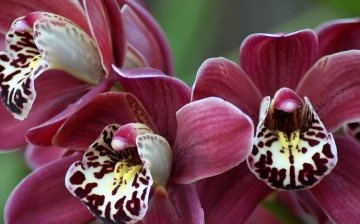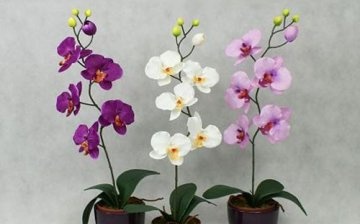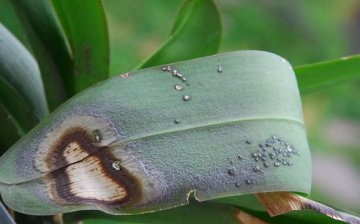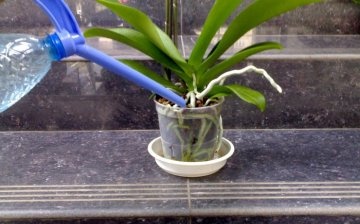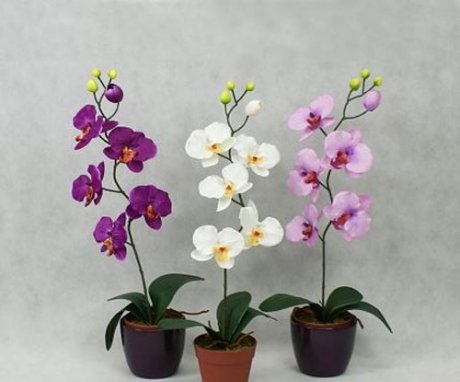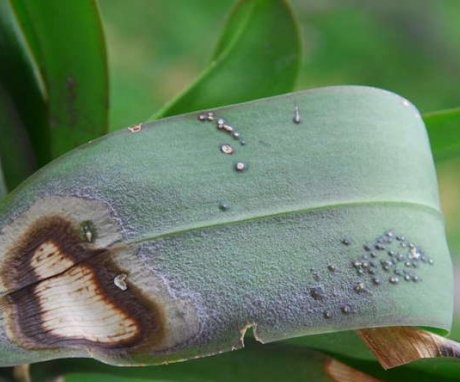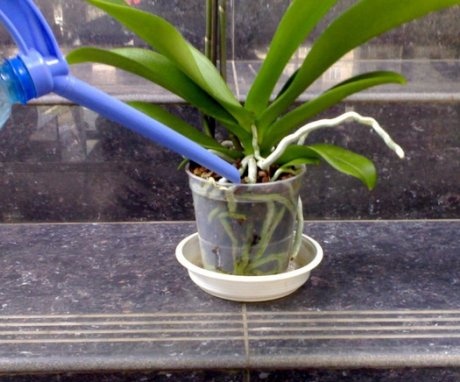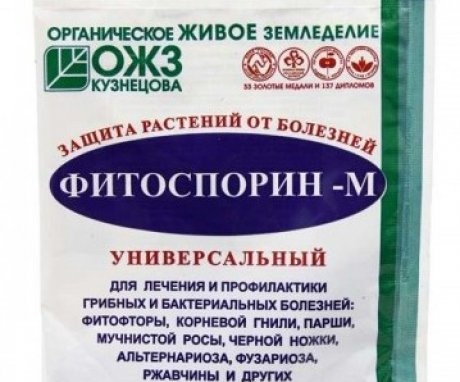Fungicide for orchids: a review of the best drugs
Growing fragile orchids - the process is complex. Often, improper care, inappropriate conditions created for a houseplant, lead to various diseases of the flower. It is easy to kill an orchid, but finding an effective medicine is not easy. You need to know how it will affect the symptoms of the disease, whether its use will lead to positive results.
One of the oldest plants, the orchid, appeared on Earth millions of years ago. It was still admired by primitive people. And now, thanks to breeders, a huge number of varieties of orchids have been bred. The external grace of the flower is combined with its internal delicacy. A slight deviation from the norm in the agricultural technology of the plant leads to the appearance of pathological problems in the flower. Orchid lovers need to know what drugs can heal a capricious beauty.
Content:
- Indoor plant description
- Common diseases of a flowering plant
- Fungicides - what are they, how they work
- Review of effective preparations for orchids
Indoor plant description
Perennials of the Orchid family have firmly won the hearts of indoor flower lovers. There are thousands of species in the world orchids, but no more than twenty of them can grow in enclosed spaces. The native land of the plant is the tropical forests of America, southeast Asia.
Most of them live off other green fellows in the neighborhood. Therefore, the roots of orchids are not in the ground, but hang down, receiving nourishment from the bark of trees, the herbaceous layer of the soil, and moist air. They are referred to as epiphytic plants. It is these varieties that can adapt well to indoor conditions. There are other types of orchids that adorn the rocky cliffs.
The main feature of representatives of epiphytes is a thickened stem, called a pseudotuber.
Egg-shaped or cylindrical tubers are connected by a thin rhizome. Flowers are located on long peduncles extending from the pseudotubers. Their size and color depends on the type of plant. The decorativeness of the flower in its structure: on the outside there are two lateral and one upper sepals, on the inside there is one tongue of the petal surrounded by the lateral ones. This tongue, or delicate lip, of the flower attracts insects and birds with its brightness, which are engaged in pollination of orchids.
In the lower part, the plant is decorated with dark green leathery leaves, which always look fresh and attractive. A beautiful perennial also requires special care, since its susceptibility to unfavorable growing conditions is high.
Common diseases of a flowering plant
Considering that high temperature and humidity are important for tropical flowers, growers are trying to provide a similar mode of life for orchids. Excessive diligence leads to the fact that the water in the pots stagnates, water vapor accumulates in the room. Under such conditions, pathogenic fungi that infect the leaves and flowers of the orchid begin to activate.
The most common infectious pathologies of epiphytes include:
- When infected with anthracnose, orchid leaves are covered with brown spots with a clear outline. Then a pinkish mildew or black bloom appears on them. The development of the fungus is associated with the stagnation of liquid in the axils of the leaves or on their surface. Also, microorganisms actively multiply in rooms with an air humidity of more than seventy percent.
- Fusarium fungi enter the orchid through pores or wounds on parts of the plant. By blocking the blood vessels of the flower, pathogenic organisms lead to dehydration of the plant organism. Hence the withering of the indoor flower, the appearance of rot on the roots. In this case, the leaves turn yellow, then fall off, and the roots become soft and slippery. The cause of fusarium is the presence of a low temperature regime of the soil due to the active evaporation of moisture, a decrease in oxygen in the soil due to frequent watering. A high content of peat or salinization of the substrate with rare orchid transplants promotes the development of the fungus.
- For gray rot, brown spots appear on the flowers. Old plants are especially susceptible to disease. Having overwintered on the dying parts of the flower, the fungus is activated on cold damp days of autumn or spring. Spores infect orchids located near a diseased plant quickly, over fourteen hours, especially when the air in the room is stagnant. As the infection progresses, the mycelium filaments will be visible on the spots.
- Black rot spreads to the roots of a tropical perennial with a scale insect, aphids, worm. By closing the stomata of leaves from the penetration of sunlight, pests contribute to the development of fungal spores. And high humidity, an excess of nitrogenous fertilizers in the soil only help to develop pathogenic spores.
- If a bloom of white with a pinkish tinge is visible on the leaves of an orchid, then this plant is infected powdery mildew... The disease is called so for good reason: it seems that the orchid was sprinkled with flour. The infection is dangerous because it can lead to the death of the flower.
Pathogenic fungi choose an orchid for their development, since for them a favorable habitat is humidity, heat, in which perennials grow.
Fungicides - what are they, how they work
Fungicides they call such agents that kill pathogens of fungal infections in representatives of the green world. There are a huge variety of drugs, the action of which is aimed at preventing infection with fungal spores, killing microorganisms.
The composition of fungicidal agents can include both compounds of heavy metals - copper, mercury, manganese, and organic substances, derivatives of chemical acids, aldehydes.
Organic fungicides are becoming more popular and their use is increasing. They are more effective in fighting fungi while stimulating plant development. Such drugs dilute well in water, easily combine with other agents. And inorganic fungicides deposit heavy metals in the soil, which remain there for a long time. Many of them are dangerous for the soil microflora.
In addition, there are antifungal agents composed of beneficial bacteria, the so-called biofungicides. Such products are the least toxic, therefore they are popular with orchid lovers.
The methods of using fungicides are different:
- They are used to treat parts of an orchid during a flower transplant. For this, the drug is diluted in water or used dry.
- The diseased plant is sprayed with a fungicide solution, affecting the foci of the fungus.
- You can kill microorganisms that live in the soil by adding powder or solution while digging or watering.
The effectiveness of fungicides depends on the extent and location of damage to the flowering plant.
Review of effective preparations for orchids
Choose a reliable drug that helps save your beloved orchid from a fungal disease, it is difficult.But there are the most famous means tested by flower growers:
- Alirin is classified as a biofungicide that suppresses fungal infections in the soil and on the orchid. The medicine effectively fights powdery mildew, gray and root rot. Apply the drug in the form of a dry powder or tablets with a weekly break. It has good compatibility with different types of insecticides, growth regulators.
- The Bordeaux mixture has a strong effect on the spread of spores of the fungus. The solution is based on copper as a strong poison and slaked lime to neutralize the acidity of the soil.
- Broad-spectrum fungicides include Quadris. It is effectively used against powdery mildew, anthracnose, fusarium wilting, gray mold. The product is based on azoxystrobin, which has a preventive and therapeutic effect. When processing orchids, precautions must be taken.
- Copper sulfate contains copper sulfate, which is dissolved in water. The positive effect of the drug is felt two hours after treatment. Do not spray orchids during flowering and at room temperatures over thirty degrees.
- In the initial stages of fungal infection, Mikosan will help. The agent increases the plant's resistance to pathogenic microorganisms, activating the production of lectins.
- Trichodermin is necessary for the prevention of infections and the improvement of the soil. It contains spores of soil fungus, which have a detrimental effect on pathogens that cause the appearance of rot. The drug is safe for humans and pets.
- Fitosporin protects the indoor flower from various diseases. It comes in the form of a paste, powder and liquid solution. The agent acts on pathogens immediately after treatment.
- Pure color possesses high protective properties. It should be used at the first symptoms of fungal infection and for prophylaxis.
All antifungal drugs are used for orchids only after carefully reading the instructions.
More information can be found in the video:



